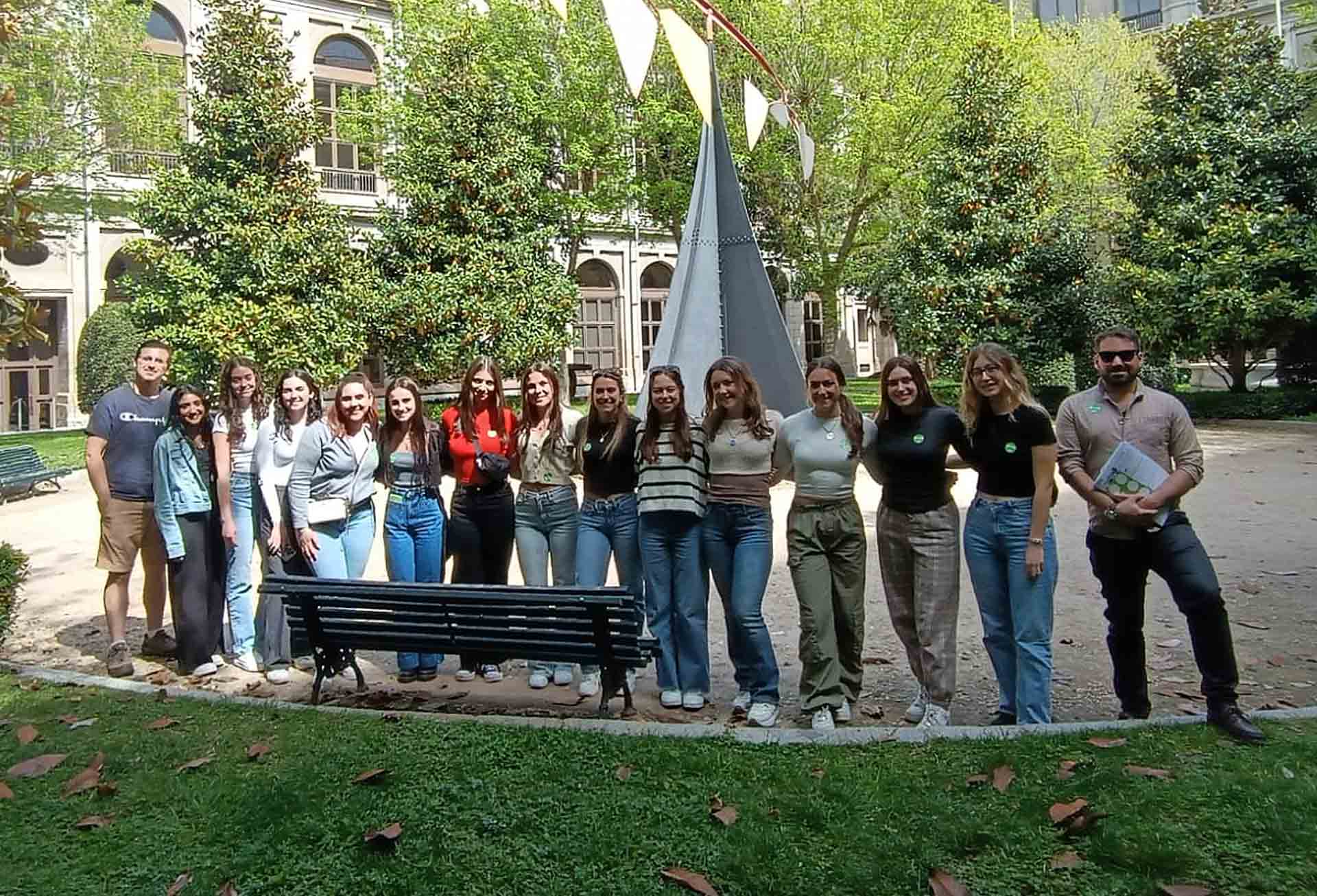PhD Alex Felman, Coordinator of the Modern Languages and Literature Department at CIS University, organized a visit to the Reina Sofía Museum in Madrid for the Spain Past & Present Group class.
It was a success of coverage of recent art, art criticism and art history. Aside from the obvious tours de force of Salvador Dali and Pablo Picasso, the explanations of two fine students stood out: Sofia Hall covered the History of the Museum itself, while Madelyn Herrick covered the importance of Spanish art, art criticism and art history of the 20th century – delivered in the Sabatini Courtyard and near the Guernica respectively.
Sofia Hall gave a presentation which covered the History of the Sabatini building. She gave an overview of the 16-20th-c. history of the main building, which was originally a hospital in the 16th century (under Felipe II). She explained its expansion in the 18th century (under Fernando VI) – the structure & function of neoclassical architecture for the attempts at reformism of the 18th-c. Bourbons. Then she covered the various additions, reforms and modifications as a hospital throughout the 19-20th centuries until 1969 (when it closed as a hospital during the fascist dictatorship). Simultaneously, she also explained the reason for the place’s beginnings as a space for art exhibition (Museo de Arte Moderno – 1894), as well as the metamorphosis during the era of “La Transición Democrática” – when it was converted into a national art museum between 1986-1988.
Next, Madelyn Herrick gave a presentation which covered the Artworks housed within the Reina Sofia Museum – delivered near the Guernica. She explained the whos, whens, wheres, whys and hows of the principal 20th-c. international artistic movements (particularly with reference to Spain’s recent history): cubism, expressionism, surrealism, modernism, abstract expressionism, minimalism and postmodernism. This led to an exploration of the biographies of some of the most famous artists whose work is housed within (Pablo Picasso, Salvador Dalí, Joan Miró, Wassily Kandinsky, Juan Gris, René Magritte, Diego Rivera, Mark Rothko, etc). She also focused heavily on two major works of 1930s-era Spanish art (which are nearby each other): The Great Masturbator by Salvador Dalí and Guernica by Pablo Picasso.
All in all, these two students gave excellent, thought-provoking and thoroughly informative presentations. Congratulations to both!

